Bacterial wars are everywhere. Whether they shoot deadly arrows into each other, poke them with lethal sticks or melt each other’s houses. Bacteria know how to make the lives of their competitors incredibly miserable.
And sometimes, they use a chemical to kill other bacteria. This chemical is the so-called bacteriocin – a molecule produced by bacteria that is toxic against other bacteria.
But interestingly, these bacteriocin chemicals are not only to kill. They also help bacteria communicate and let them know about external attacks.
This mechanism might even give bacteria some kind of conscience. They work together to understand that they are under attack and then they decide to launch a massive counterattack.
This strategy to produce the bacteriocin is a bit complex, so we will explain it in more detail here.
Bacteria produce bacteriocin – another mechanism of bacterial warfare
Researchers knew for a while that some bacteria produce a group of molecules that they called bacteriocins. These bacteriocins are toxic proteins. And they mean to kill bacteria from the same family as the producing bacterium.
But when a bacterium produces such a bacteriocin, it also risks killing itself with it. This is why this bacterium also needs to produce an immunity protein. This immunity keeps the bacteriocin inactive so that the producing bacterium is safe from its toxicity.
Additionally, bacteria produce a lysis protein. This lysis protein dissolves the membrane of the producing bacterium. So, once the bacterium produced a lot of the bacteriocin, the bacterium dies and releases the molecules into the surrounding. Here, the bacteriocin comes into contact with other bacteria to kill them.
How to investigate that bacteria produce bacteriocin
So, when one bacterium decides to commit suicide, it actually means killing those surrounding bacteria. What an altruistic strategy.
But, obviously, bacteria need to regulate the production of these three proteins very tightly. Otherwise, they might risk killing themselves or their sibling for nothing.
This is why researchers are investigating how bacteria regulate this process. And they found, that bacteria even use this strategy to talk to each other to send alarm signals.
For this, researchers looked at two bacterial family members that produce two different kinds of bacteriocins. And they put these two bacteria right next to each other and let them grow. After a while, both bacteria have doubled so many times that researchers could see these bacterial colonies with the eye.
In the picture below, you can see these colonies as two big black spots. However, here neither bacterium actually produces the bacteriocin.
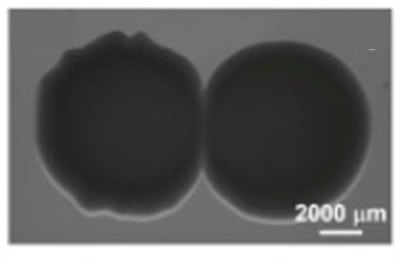
Bacteria attack
In the next experiment, the bacteria in the right spot produce their bacteriocin. So, they are ready to kill.
The bacteria in the left spot do not produce a bacteriocin but instead, they have a so-called reporter. This reporter gets activated when the bacterium WANTS to produce a bacteriocin. And when the reporter is active, the bacterium turns green.
Now, bacteria in the right produce a bacteriocin to kill the bacteria in the left spot. And this works as you can see that the left spot is a bit smaller than the right spot.

Plus, the left spot now turns green. This green region is right next to the killing zone. Thus, it seems as if the remaining bacteria here are getting angry and turning into green little Hulks. This means they would like to produce bacteriocin to counterattack the bacteria in the right spot.
Bacteria fight back
Next, researchers wanted to know what happened if bacteria could actually fight back. So, they gave bacteria in the left spot also the ability to produce their bacteriocin. Now, bacteria in both spots could produce bacteriocin to fight.
And that is exactly what they do.
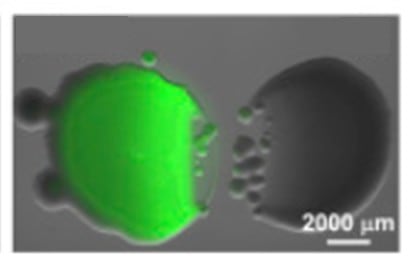
You can now see the killing zone in both spots. This means that bacteria in both spots are dying.
Also, almost the whole left spot turned green. Previously, only a small zone close to the killing zone was green. Instead, now all bacteria in the left spot are ready to counterattack the bacteria in the right spot.
Bacteria get angry and produce bacteriocin
From these results, researchers think that bacteria have some kind of competition-sensing mode. As soon as bacteria realise that there is danger, they talk to each other. Now, they can assemble and fight off the attacker as a team.
Basically, someone angers you, so you get angry. Now, you call up your friends to come together and put an end to it.
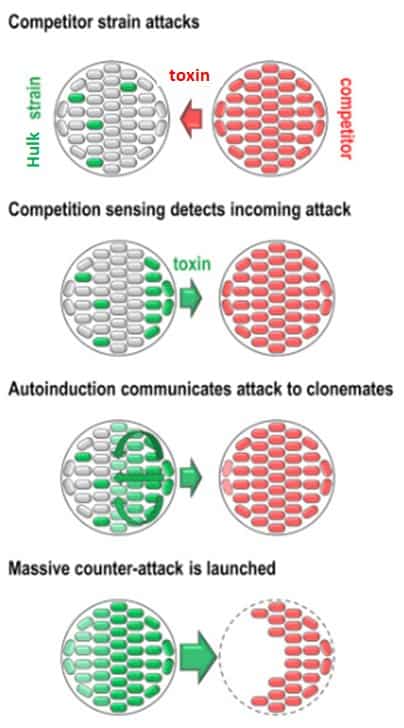
Are bacteria social because they produce bacteriocin?
In this study, researchers showed that bacteria have some kind of social behaviour. The idea is that when bacteria are under attack and start dying, they tell their siblings about it. Now, the others can prepare themselves to fight off the attacker.
This behaviour is pretty altruistic and incredibly smart of bacteria. Even though a bacterium is dying, it wants its sibling – and thus its species – to survive.
What do you think? Do you think is altruistic behaviour is worth to safe the rest of the family? Let me know your thoughts in the comments below!


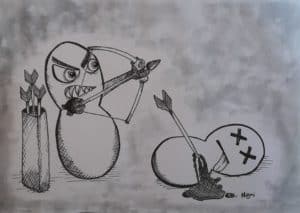

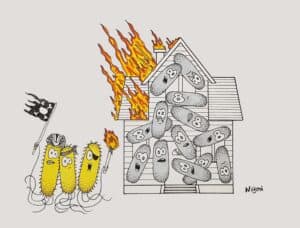
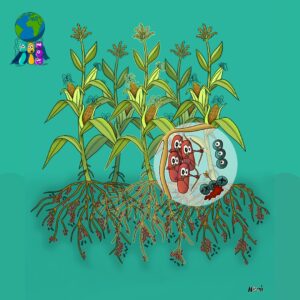
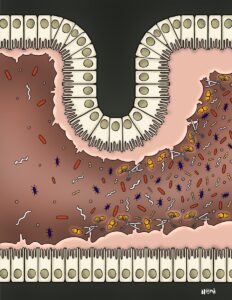
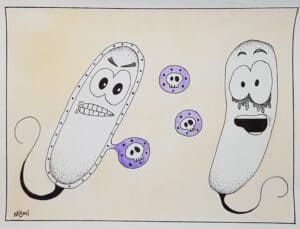
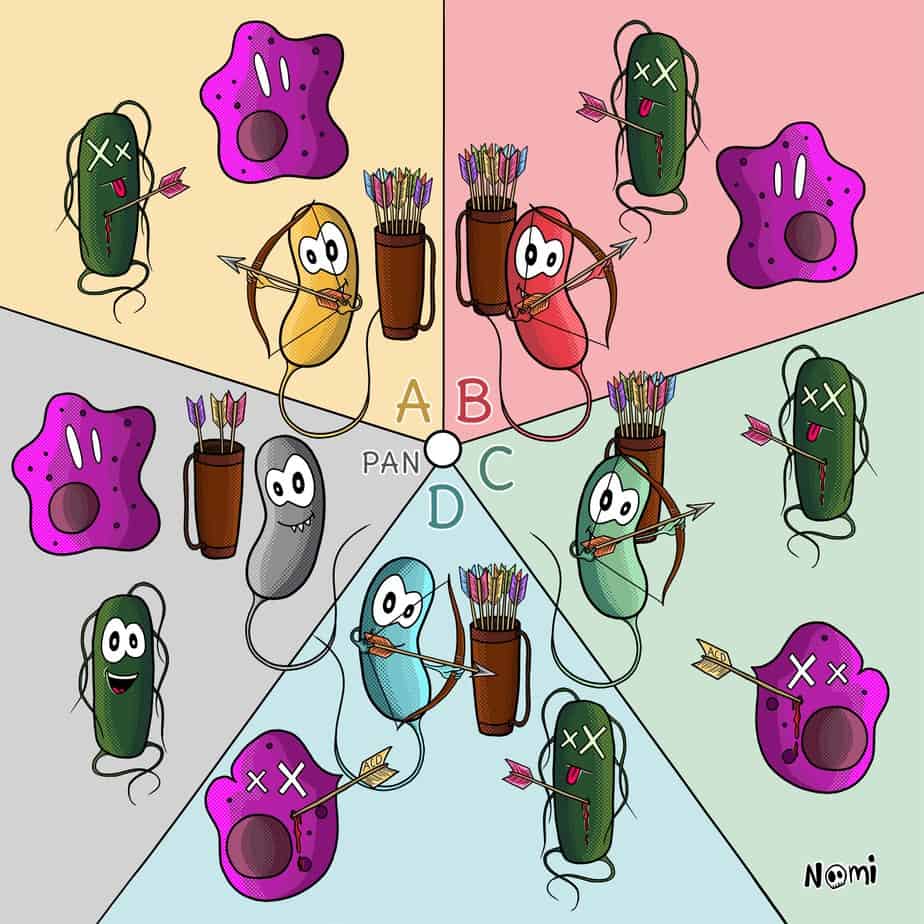
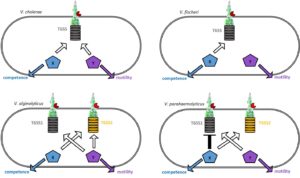

One Response